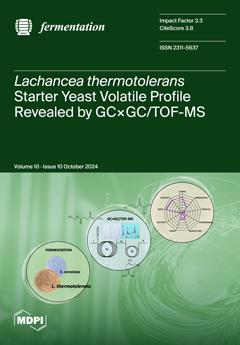Microbiota density plays an important role in maintaining host metabolism, immune function, and health, and age has a specific effect on the composition of intestinal microbiota. Therefore, the age-specific effects of age differences on the structure and function of the ileum microbiota in Tibetan sheep were investigated by determining the density of the ileum microbiota, the content of VFAs, and the expression levels of their transporter-related genes at different ages. The results showed that the contents of acetic acid and propionic acid in the ileum of Tibetan sheep in the 1.5-year-old group were significantly higher (
p < 0.05) than those in other age groups, and that the contents of total VFAs were also significantly higher (
p < 0.05) than those in other age groups. The relative densities of ileum
Rf,
Ra, and
Fs were significantly higher in the 1.5-year-old group than in the other age groups (
p < 0.05). The ileum epithelial VFAs transport-related genes
AE2,
MCT-4, and
NHE1 had the highest expression in the 1.5-year-old group, and the expression of
DRA was significantly lower in the 1.5-year-old group than in the 6-year-old group (
p < 0.05). Correlation analysis showed that
Cb,
Sr, and
Tb were significantly positively correlated with butyric acid concentration (
p < 0.05) and negatively correlated with acetic acid, but the difference was not significant (
p > 0.05);
MCT-1,
MCT-4, and
AE2 were significantly positively correlated (
p < 0.05) with acetic, propionic, and isobutyric acid concentrations;
NHE1,
NHE2, and
MCT-4 were highly significantly positively correlated (
p < 0.01) with
Romboutsia and
unclassified_Peptostreptococcaceae, while acetic acid was significantly positively correlated (
p < 0.05) with
NK4A214_group;
Romboutsia, and
unclassified_Peptostreptococcaceae were significantly positively correlated (
p < 0.05). Therefore, compared with other ages, the 1.5-year-old Tibetan sheep had a stronger fermentation and metabolic capacity in the ileum under traditional grazing conditions on the plateau, which could provide more energy for Tibetan sheep during plateau acclimatization.
Full article





